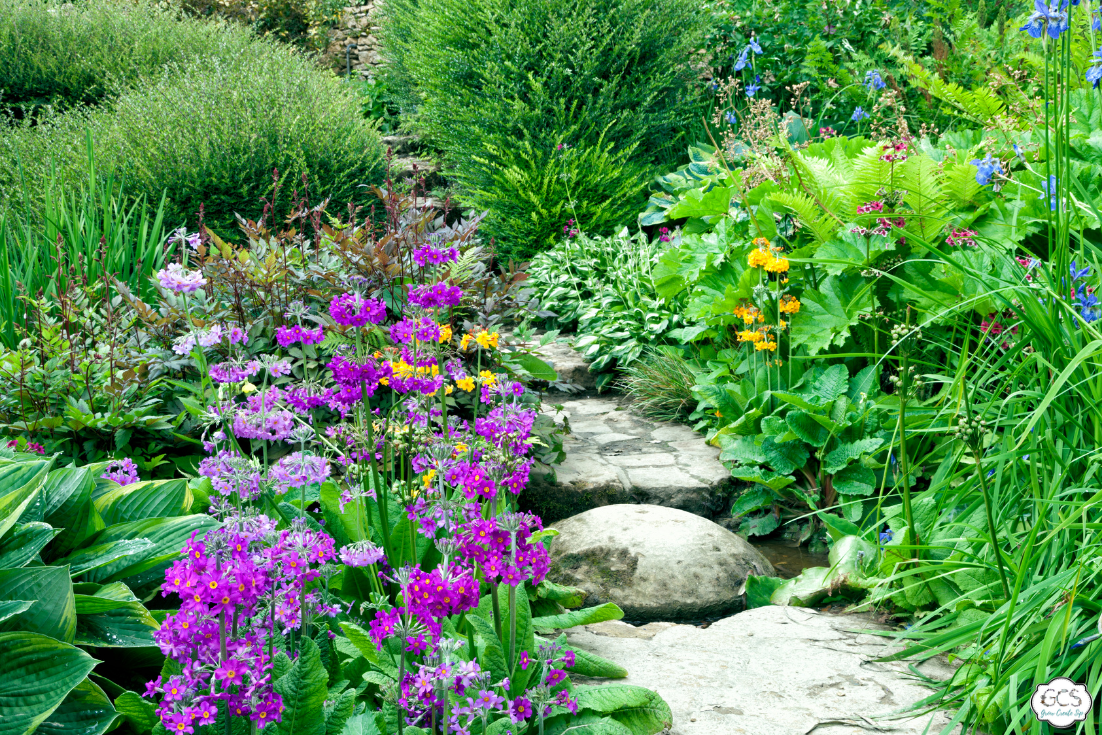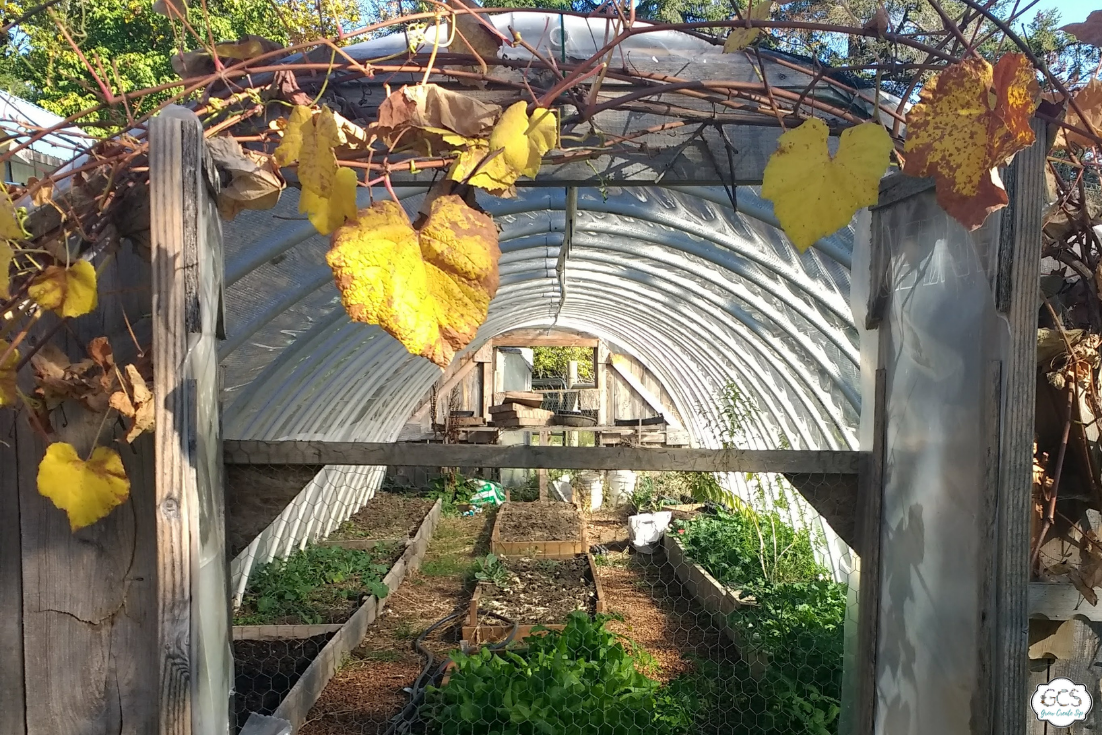Herbalist Garden: Getting Started
Apr 06, 2022
While herbs were cultivated clear back to the time of Adam and Eve, medicinal herbalist gardens such as that of St. Gall have been in use for hundreds of years. This just shows that humanity has not only been using but has been reliant on natural remedies and plants for thousands of years.
When you grow your own herbs, you get to redefine what "fresh" means, and you absolutely can taste the difference. Plus you get to use your herbs for many things.
But it can be intimidating to get started, especially because there are so many options out there. How do you know what will work for your space, and how do you know what you will actually use?
Let's dive into what exactly should go into a herbalist garden and how you can go about crafting the best one for you.

Before we start:
This herbal information is just that, information. This blog post and I DO NOT INTEND to treat, cure, or diagnose any disease or illness. This is for informational, educational and entertainment purposes only. Please consult a physician before using herbs medicinally.
This post also contains affiliate links throughout. Translation: We get a little kick back for sharing certain products, at no additional cost to you, should you choose to purchase said items. And - thank you for supporting our farm and family! Read the full disclaimer here.
What Should Be In a Herbalist Garden?
Your herb garden is your own. You can plant whatever you'd like, and work with specific remedies. The beauty of a herbal garden is that its value lies in its properties and nutrients, but its gift is also one of beauty and aesthetics.
Plus the benefit of being able to treat yourself and your loved ones with all-natural healing herbs. To plan your herb garden, you likely want to first consider the common ailments you or your family may experience. You could target specific problems or plant a wide range of herbs with a few to suit your own needs best.
Common Ailments
Think about what the most common illnesses in your home may be. Stick to the basics for this round of choices. How about:
- Stomach aches
- The common cold
- Rashes
- Insomnia
- Sore throats
- Headaches
- Burns
- Bug bites
- Scratches and grazes
- Bruises
There are plenty of herbs and plants that can target several ailments, which would make it an ideal addition in the garden. Once you've covered the basics, think about more particular ailments, perhaps something like:
- Blood pressure (high or low)
- Blood sugar levels (high or low)
- Irritable bowel syndrome
- Menopause
- Inflammation
- Arthritis
- Asthma
- Fatigue
- Stress and anxiety
This is, of course, a very personal exercise. What one home needs compared to another is going to be very different. The best thing you can do is make a list of your concerns on a piece of paper. Once you have your list, see if you can find the most common herbs used to treat them. You may very well find them listed below.

The Best All-Round Herbs
Our aim is to plant a garden that gives us both medicinal and culinary herbs. It's even better if one plant does both, like peppermint or rosemary. An added benefit is that growing your own herbs means you control exactly how they're used, in what quantities, and what kind of light or temperature they've been exposed to, which can minimize some of their potencies.
These are our best all-around herbs to plant in your garden, but be sure to do your own research for more specific needs.
Calendula
Calendula, often known as pot marigold, is a flower that boasts many antifungal, antiseptic, and wound-healing properties. It's also been a staple of home medicine for centuries. Many natural cosmetics and creams use the petals of these daisy-like blooms for their skin-soothing effects.
Cilantro
Cilantro (or coriander) has a unique flavor that people either love or hate. The leaves are commonly used as a garnish in Mexican, Thai, and Indian cuisine. Few people consider this a medicinal herb, but studies show that it can really help with digestion. It may even remove heavy metals and other toxins from the body.
Lemon Balm
Lemon balm has long been used to help with mood and cognitive function. It's also great for stress relief, anxiety, insomnia, indigestion, and cold sores, and it can even help treat nausea and menstrual cramps.
Peppermint
For thousands of years, we have used peppermint for its pleasant, minty taste, but its health advantages are nothing to scoff at either. Peppermint could help ease digestive troubles, it may relieve tension headaches and migraines, and research has linked it to improved energy levels and clearer sinuses!

Mullein
Mullein is a flowering plant that has long been used in herbal medicine. We can use it in herbal supplements, but it is most commonly used for tea and can help with ailments like asthma, the common cold, bronchitis, and COPD.
Thyme
Thyme is great for fighting back against bacteria and fungus and contains a host of minerals and vitamins that promote good health. It's also full of vitamin C, potassium, and manganese.
Lavender
Lavender is a bit of a jack-of-all-trades herb, so it's well worth having in your garden. It looks and smells great, but it can also help support healthy sleep, reduce pain and inflammation, help with mood and anxiety, and kill harmful viruses and bacteria.

German Chamomile
German chamomile is a herb used all over the world, though it is native to southern and eastern Europe. The chemicals in German chamomile have been known to promote relaxation and reduce swelling, making it great for teas and baths.
Anise Hyssop
Anise hyssop is neither a part of the anise family nor the hyssop clan. It's part of the mint family! The leaves smell like anise, hence the name, and it has bright lavender-like blooms. It's known for its cold-fighting benefits, can relieve congestion, and acts as an expectorant.

Designing the Perfect Space
If you don't have a sizeable garden, then pots on porches or in the home are ideal. You may have ample space outdoors, but some herbs require different soil types.
Second, consider the height your herbs tend to grow. Taller plants, like oat straw or anise hyssop, can add good vertical interest to your space, but they're best served in the back of a bed so they don't overshadow smaller plants.
You can also plan out your space like the monasteries of old, like St. Gall which includes an Infirmary Garden, a Cemetary Garden, and a gardener's house. Or you can go more English such as the traditional cottage garden style. This brings tradition into the garden and can make a space productive yet relaxing and beautiful.
Ultimately, you have plenty of options, and there will be one that suits your needs above all, though you should be able to combine more than one of them in the same space. Let's take a look.
Raised Garden Beds
A raised bed is ideal because you can provide the perfect environment for your herbs. These are great for planting similar herbs next to one another and raised beds to give you the space to grow a broad selection of herbs.
For example, put your culinary herbs near the kitchen and your sun-loving ones where they'll get the most light. These give you more flexibility than in-ground beds, but the soil dries out faster, and you'll have to buy soil specifically for them.
In-Ground Beds
If you have the ideal space for a group of herbs, in-ground planting is great. It means you can use existing soil, and it's more financially economical. There's less overall start-up work, and they are easier to irrigate.
With that in mind, however, you have less control over the soil, and the ground can become compacted, which could hurt the plants. There's also more chance of weeds!

Pots on Porches
Though there may be ample space in your garden for herbs, there are many advantages to growing your herb seeds and herbs in pots. They're mobile, which means you can bring them indoors during the winter, and different sizes and colors make for interesting and appealing visual displays! However, you want to make sure your pots have good drainage and keep in mind they dry out faster than beds.
In the Home
Indoor herb gardens deliver fresh herbs to your fingertips and add scent and greenery to your house. They allow you to bring a bit of homegrown finery to your house and are especially ideal if you live in an apartment or have limited outdoor space.
However, not all plants will thrive indoors. Basil, for example, loves sunlight, as does cilantro. Dill is fine indoors, but they get surprisingly big, so a plant like this isn't ideal if space is your concern. Do your research and find what will fit!
Sort by Remedy
This strategy could apply to any of the above, but it may be wise to sort your herbs for their uses. For example, one corner of your garden could be the digestive area, and the array of pots on your patio is for headaches.
This helps keep your space productive and uncluttered and means you know exactly where to go when you need something. Plus, the plants with similar benefits tend to do best in the same climates, making them super easy to grow together.

Home and Healing With Grow Create Sip
Designing your own herbalist garden means taking control of your space, health needs, and well-being. Gardens are great for many things but particularly useful for growing culinary and medicinal herbs.
There are also options to suit any level of the gardener and any space needs they may have. Whether you're just getting started or are branching out into building new beds and raised troughs for your garden, it is important to know what to plant and how to plant it.
I want to invite you to join the Herbal Studio & Communi-tea! We are a group of herbal-minded folks sharing our struggles and successes. While there is nothing like a friend with you, this is the next best thing. Along with a group of new friends, there is also a library of herbal monographs and how-to-videos covering planting, gardening, designing clear to harvest, and creating different concoctions.
I'd love to know, though, do you already have a medicinal herb garden? What does it look like? Is it in the ground, in grow boxes, and how do you have it organized? Please drop me a comment below!
Learn more about growing medicinal herbs...
- How to Plant, Care for, and Grow Lavender
- Growing Herbs in Pots
- How to Plant and Propagate Elderberry Bushes
- How to Satisfy and Scarify Medicinal Seeds
- How to Plant Roses
- How to Harvest Herbs Effiecently - Top 5 Tools
















